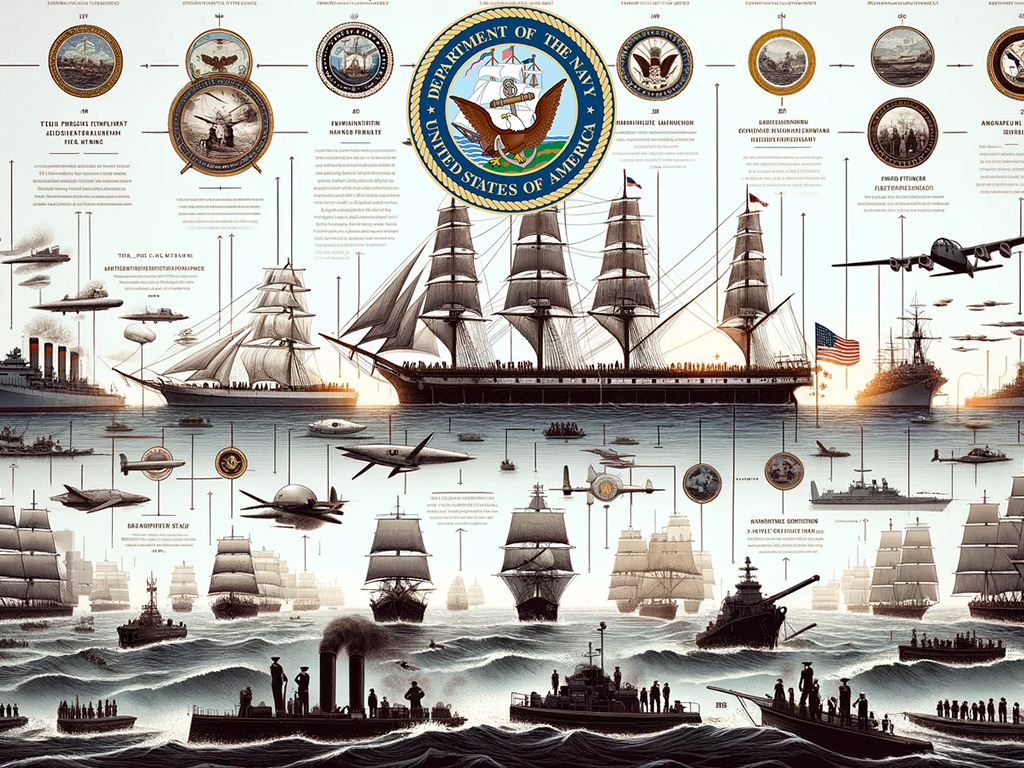 The United States Department of the Navy (DON): A Defender of Freedom The United States Department of the Navy is a force to be reckoned with. With its powerful fleets, cutting-edge technology, and the unmatched dedication of the Navy and Marine Corps, the DON safeguards our nation’s interests across the vast expanse of the world’s oceans. From defending freedom of navigation to providing humanitarian aid, the Department of the Navy stands ready to answer the call.
The United States Department of the Navy (DON): A Defender of Freedom The United States Department of the Navy is a force to be reckoned with. With its powerful fleets, cutting-edge technology, and the unmatched dedication of the Navy and Marine Corps, the DON safeguards our nation’s interests across the vast expanse of the world’s oceans. From defending freedom of navigation to providing humanitarian aid, the Department of the Navy stands ready to answer the call.
The primary mission of the Department of the Navy is to protect the United States, as directed by the President or the Secretary of Defense, by the effective prosecution of war at sea including, with its Marine Corps component, the seizure or defense of advanced naval bases; to support, as required, the forces of all military departments of the United States; and to maintain freedom of the seas.
The United States Navy was founded on October 13, 1775, when Congress enacted the first legislation creating the Continental Navy of the American Revolution. The Department of the Navy and the Office of Secretary of the Navy were established by act of April 30, 1798 (10 U.S.C. 5011, 5031). For 9 years prior to that date, by act of August 7, 1789 (1 Stat. 49), the conduct of naval affairs was under the Secretary of War. link
The National Security Act Amendments of 1949 provided that the Department of the Navy be a military department within the Department of Defense (63 Stat. 578).
Who is The United States Department of the Navy:
Essential Part of Our Nation’s Defense: The Department of the Navy is one of the three military departments nested within the larger United States Department of Defense. It is led by the Secretary of the Navy, a civilian who reports directly to the Secretary of Defense.
Two Branches, One Mission: The DON comprises two primary service branches: the United States Navy and the United States Marine Corps. These forces operate in close cooperation to project power and maintain security across the world’s oceans.
What The United States Department of the Navy Does:
Critical Missions: The Department of the Navy has several core missions and responsibilities:
Sea Control and Power Projection: Ensuring freedom of navigation on the seas, protecting global maritime trade routes, and projecting American military power anywhere in the world.
Strategic Deterrence: Operating the sea-based leg of the United States’ nuclear ‘triad,’ maintaining a powerful deterrent against adversaries.
Humanitarian Assistance and Disaster Relief (HADR): Providing rapid-response assistance during natural disasters or international crises, both foreign and domestic.
Worldwide Presence: With ships, submarines, aircraft, and Marines deployed all over the globe, the US Navy represents a continuous force for good in the world.
Where The United States Department of the Navy Operates:
Headquarters: The Pentagon in Arlington, Virginia is the DON’s nerve center.
Fleets and Operations: The DON organizes its fleets geographically to cover the globe. Fleets are based on both the Atlantic and Pacific coasts of the United States, with areas of responsibility extending to Europe, Africa, the Middle East, Asia, and beyond .
Marine Corps Bases: Major Marine Corps bases are found throughout the US, with significant installations in California, North Carolina, South Carolina, and other strategic locations.
